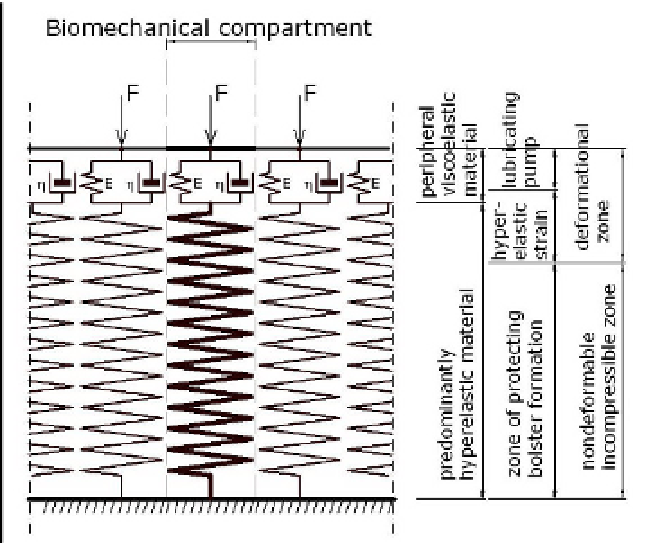Biomedical Engineering Reference
In-Depth Information
Due to pseudoplastic properties of SF in the space between the opposite AC surfaces (Fig.
9.), non-physiological
abrasive wear
of the surfaces of AC peripheral zones is efficiently
prevented.
The SF solution process in the gap between the AC surfaces is not an isolated phenomenon.
It is
interconnected (during walking, running etc.) with residual SF in the pores of the
intercellular matrix in peripheral zones of the tibial and femoral part of AC. Under high
loads, an
integrated unit
is generated which, after the
formation of an incompressible
“cushion”
, is able to transfer extreme loads thus protecting the peripheral and internal AC
structures from their destructions.
2.2 Residual strains during the cyclic loading in the articular cartilage
In agreement with our analyses, the properties and behaviors of articular cartilage in the
biomechanical perspective may be described by means of a complex viscohyperelastic
model (Fig. 11.). The biomechanical compartment is composed of the Kelvin Voigt
viscoelastic model (in the peripheral and partially in the transitional zone of AC) and of the
hyperelastic model (in the middle transitional zone and the low zone of AC). The peripheral
zone is histologically limited by oval (disk shaped) chondrocytes. The viscohyperelastic
properties of AC are predetermined by the specific molecular structures.
The mechanical/biomechanical properties of articular cartilage are topographically non
homogeneous. The material variability and non homogeneity depends on the type and the
size of physiological loading effects (Akizuki et al., 1986; Petrtyl et al., 2008).
Fig. 11. Mechanical diagram of the complex viscohyperelastic model of articular cartilage.
The mechanical compartment is composed of the Kelvin Voigt viscoelastic model (in the
peripheral and transitional zone of AC) and of the hyperelastic model (in the middle
transitional zone and the low zone of AC)





